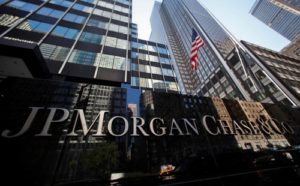For a long time I warned that our economic bubble would burst and that we would plunge into a nightmarish economic collapse. Now it has happened, and it turns out that fear of COVID-19 was the “black swan event” that triggered the collapse. The ironic thing is that COVID-19 is not even close to the worst thing that is going to happen to us. But it was more than enough to topple our incredibly fragile economic system, and now tens of millions of Americans are deeply suffering. On Friday, the April jobs report was released, and it was the worst jobs report in U.S. history by a very, very wide margin. According to the official numbers, 20.5 million Americans lost their jobs during the month, and the unemployment rate shot up to 14.7 percent. During the last recession, the unemployment rate peaked at about 10 percent, and we have already left that number in the dust.
The figures that we are seeing now are truly, truly horrifying, and what is even more frightening is that they aren’t even that accurate.

But don’t take my word for it.
On Friday, the U.S. Labor Department publicly admitted that the true unemployment rate in April was closer to 20 percent…
Millions of U.S. residents were counted as employed in April despite having no job, suggesting April’s true unemployment rate was closer to 20%, much higher than the official 14.7% reported, the Labor Department said Friday.
The jobless rate should have included people on temporary unpaid leave, furloughed because of the coronavirus pandemic, the government said.
I applaud the Labor Department for trying to be honest. In the report, they openly admitted that an “additional 7.5 million workers” should have been classified as unemployed…
But responses to the survey by which the data was collected show 11.5 million people were categorized as employed but absent from work because of vacation, parental leave or other reasons, but including 8.1 million absent for “unspecified” reasons, a group that usually numbers about 620,000.
“One assumption might be that these additional 7.5 million workers …should have been classified as unemployed on temporary layoff,” a note attached to the government’s jobs report Friday said.
If those workers had been correctly classified, the official unemployment rate would have been about 19.5 percent, and that would have put us solidly in Great Depression territory.
But others have looked at the numbers and calculated that the true rate of unemployment should be even higher than that.
For example, Standard Chartered has calculated that the true rate of unemployment could be as high as 27.5 percent…
While it is true that what the BLS reported that the April unemployment rate (UR) was less than expected (14.7% versus consensus of 16.0%) and the drop in payroll employment of 20.5 million was also less than the 22.0 million expected, Standard Chartered bank has calculated that adjustments to the headline unemployment rate push the effective number of unemployed to 42 million and the effective UR rate to 25.5%, higher even than the U-6 underemployment rate of 22.8%. Worse, if one treats underemployed in line with the U-6 methodology, the true April unemployment number would rise to an mindblowing 27.5%.
So how did Standard Chartered arrive at those numbers? The following is how Zero Hedge explained it…
How does one get these numbers? As the bank’s chief FX strategist Steve Englander explains, start with the 23.1 million unemployed as published by BLS. To this add 8.1mn people who have dropped out of the labor force since February (previously the labor force had been growing steadily, so these are likely unemployed).
Add back 7.5MM workers classified as ‘employed but not at work for other reasons’ – BLS states that these workers are likely misclassified as employed, when they are in fact unemployed. Involuntary part-time work for economic reasons has gone up by 6.6MM and we treat these as half-unemployed (i.e., a contribution of 3.3MM).
This totals almost 42 Million effectively unemployed.
And Standard Chartered is not the only one that has come up with such a high figure.
In fact, John Williams of shadowstats.com says that if honest numbers were being used that the U.S. unemployment rate would now be an eye-popping 35.4 percent.
Wow.
Of course everyone admits that things are really, really bad and that the numbers for next month are likely to be even worse.
If you can believe it, even White House economic adviser Kevin Hassett is admitting that the official unemployment rate is likely to surge above 20 percent in “May or June”…
White House economic adviser Kevin Hassett believes the unemployment rate could rise above 20% and the worst job losses would come in “May or June” because of the ongoing coronavirus pandemic.
When asked Sunday what the “bottom” of the country’s unemployment pain would be, Hassett, who advises the Trump administration on economic policy and is the former chair of the Council of Economic Advisers, told CBS’s “Face the Nation,” “to get unemployment rates like the ones that we’re about to see … which I think will climb up toward 20% by next month, you have to really go back to the Great Depression to see that.”
And even once this pandemic fades, many of those jobs won’t be coming back.
Initially, many employers had anticipated that they would be bringing all of their employees back following a short, severe crisis. But at this point reality is beginning to set in for many of them.
For example, a restaurant owner in Kentucky named Britney Ruby Miller has had to lower her expectations as this pandemic has dragged on…
In late March, Britney Ruby Miller, co-owner of a small chain of steakhouse restaurants, confidently proclaimed that once the viral outbreak had subsided, her company planned to recall all its laid-off workers.
Now? Miller would be thrilled to restore, by year’s end, three-quarters of the roughly 600 workers her company had to let go.
Yes, the state of Kentucky is starting to “reopen for business”, but for now her restaurants will “be limited to 33% of capacity” and there will be all sorts of other new expenses that Miller will be forced to deal with…
Yet business won’t be returning to what it was before. In Kentucky, the restaurants will be limited to 33% of capacity. They are putting six feet between tables in all their restaurants, thereby limiting seating. Miller estimates that the company’s revenue will plunge by half to three-quarters this year.
And expenses are rising because the company must buy face masks and other equipment for the workers it does recall and restock its food, drink, and equipment supplies.
Receive a daily recap featuring a curated list of must-read stories.
There are very, very few restaurants that can be profitable under such circumstances.
Unless the state of Kentucky lifts those ridiculous restrictions, Miller may soon lose all of her restaurants and all of her employees may soon be permanently out of jobs.
Of course more layoff announcements just keep rolling in from all over America with each passing day. The following examples come from the Wall Street Journal…
This past week, General Electric Co., Uber Technologies Inc. UBER 6.01% and Airbnb Inc. said they would lay off thousands of workers. MGM Resorts International MGM 4.42% warned that some of the 63,000 employees it has furloughed may be let go permanently starting in August. Aerospace supplier Raytheon Technologies Corp., RTX 2.91% job-listings site Glassdoor and United Airlines Holdings Inc. UAL 11.74% also said in the past week that they had reduced jobs or planned to do so.
This is what an economic depression looks like, and it is going to be so incredibly painful.
And it is critical to understand that what we have experienced so far is just a warm-up act for the next chapters.
If you remember how bitter the last recession was, that should motivate you to take action to prepare for what is ahead, because this economic downturn is already even worse.
Yes, the months in front of us will be exceptionally challenging, but you can get through this. Things may look really bleak, but for now you just need to keep hanging in there.
There will be life on the other side, but your future may end up looking far different than you originally anticipated. Source: ZeroHedge
StevieRay Hansen
Editor, Bankster Crime
![]()




